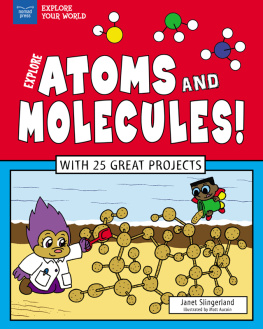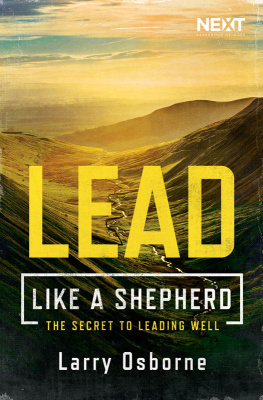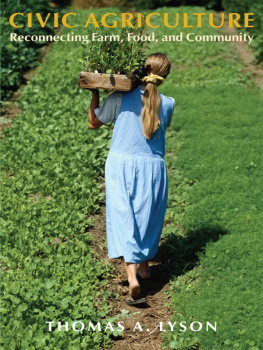Atoms in Agriculture
The Understanding the Atom Series
Nuclear energy is playing a vital role in the life of every man, woman, and child in the United States today. In the years ahead it will affect increasingly all the peoples of the earth. It is essential that all Americans gain an understanding of this vital force if they are to discharge thoughtfully their responsibilities as citizens and if they are to realize fully the myriad benefits that nuclear energy offers them.
The United States Atomic Energy Commission provides this booklet to help you achieve such understanding.
Edward J. Brunenkant, Director Division of Technical Information
UNITED STATES ATOMIC ENERGY COMMISSIONDr. Glenn T. Seaborg, ChairmanJames T. RameyWilfrid E. JohnsonDr. Theos J. ThompsonDr. Clarence E. Larson
Atoms in Agriculture
by Thomas S. Osborne
CONTENTS
1 2 2 3 4 4 4 5 5 5 8 8 10 11 11 12 13 13 15 15 15 16 17 17 18 19 22 22 23 24
United States Atomic Energy Commission
Division of Technical Information
Library of Congress Catalog Card Number: 64-60274
1962; 1963(Rev.)
ABOUT THE AUTHOR
Thomas S. Osborne is in charge of plant-breeding research being conducted by the University of Tennessees Agricultural Research Laboratory for the Atomic Energy Commission. He has been in this work since 1953.
But Dr. Osborne is a teacher at heart. Hence when students wrote inquiring about the effects of radiation on seeds, he took great interest in replying. From these replies grew mimeographed literature suggesting experiments for students; then this and other booklets.
Dr. Osborne received his undergraduate degree from Oklahoma State University and his doctorate from Washington State University.
Atoms in Agriculture
by Thomas S. Osborne,
Associate Professor of Agronomy, University of Tennessee.
To know what questions to put to Naturethat is 95 per cent of scientific research. Whitehead
If mans existence on the earth is compared to a calendar year, then he began farming in the very early morning of December 30 and began applying systematic knowledge to agriculture at 10:15 p.m. on December 31.
The first traces of man on the earth are dated at about one and three-quarter million years ago. Plant life then was very much like plant life today, but the animal population was quite different. Man became a producer of plants and animals instead of merely a gatherer and hunter about 8000 years ago. He has applied systematic study to cultivated plants and animals for only 300 years.
Research in the United States
Estimates of crop losses in the United States each year are approximately $5 billion to weeds, $4 billion to insects, and $3 billion to diseases. This total loss of $12 billion a year is about $22,500 a minute.
In an effort to reduce these losses and to raise the standard of living, agricultural research has become more specialized and more complex. Over the years it has gradually changed from trial-and-error attempts to increase production to the actual study of basic questions. To study such intricate systems as the leaf of a plant or the liver of an animal, agricultural science has had to draw from every other science. The use of radioactive tracers and radiations in research looks especially promising to agriculture.
In fact, agriculture has already begun to benefit from the applications of such research. Radioactive techniques have been used to study soils, plants, microbes, insects, farm animals, and new ways to use and preserve foodstuffs. Radioactive atoms are not used directly by farmers but are used in research directed by the U. S. Department of Agriculture and Atomic Energy Commission, by the agricultural experiment stations of the various states, and by numerous public and private research institutions. From such research come improved materials and methods which are used on the farm.
In more highly developed countries agricultural research has brought a shift of emphasis from production to utilization. In the United States today, each farmer produces enough food for himself and 25 other people. Moreover, for every person who works on a farm, there are two or three other people who sell him goods and services or process and distribute the things he produces.
In agriculture, as in all areas of research, the number of questions to be asked of Nature seems infinite. Future generations seeking to answer these questions will probably rely more on techniques using radioactive isotopes than on any other methods known today.
How Are Radioisotopes Used in Research?
They May Be Used as Tracers
Mans attempts to describe the universe consist of finding answers to the questions he puts to Nature:
How deep is a well? Toss in a rock.
Where is the cat? Hang a bell on him.
How far does a wild duck fly? Put a marker on his leg.
Where are the fireflies? Just watch at dusk.
Is our satellite still up? Listen for the radio signal.
Other questions arise in agricultural research:
How fast do roots grow? How deep? How soon does water get to them after a rain?
When does a mouthful of hay reach a cows stomach?
How long until nutrients get into her blood? Her milk?
How far will pine pollen travel on the wind?
How deep does an earthworm burrow?
To answer these questions, scientists need some kind of miniature genie, one who will shout at the proper moment, Im here! When the root has reached the fertilizer or the water has reached the root; when the hay becomes transmuted to milk, or the earthworm arrives at a particular spotthen this invisible little servant who has made the trip could announce, Im here!
Such a helpful genie exists as the radioactive atom: he is invisibly small, obedient, transportable, digestible, immune to fire, flood, or famine, able to travel under his invisible cloak to the secret hiding places of Natures creatures and announce to waiting Geiger tubes, Im here!
The physically unstable radioactive atom behaves chemically exactly like its stable counterpart until the instant it emits its radiation and becomes stable. For example, radioactive phosphorus behaves, biologically and chemically, like stable phosphorus until it emits a beta particle and becomes stable sulfur. If the beta particle enters a gas-filled Geiger tube, it produces a tiny burst of electrical energy which is registered by the counter.
Like fireflies which reveal themselves at dusk by flashes of light, radioisotopes announce their numbers and locations to sensitive Geiger tubes by flashes of invisible light.
How Effective Are Radioactive Tracers?
One way to see how valuable radioactive tracers are is to compare them to standard chemical techniques. A sensitive chemical test can perceive molecules as dilute as 10; that is, it can detect a molecule surrounded by 10 million molecules of another kind. A good radioactive tracer technique, by comparison, can distinguish concentrations of 10; that is, it can trace one in 100 billion .
In other words by the chemical test you could find a person in metropolitan New York with a secret tattoo on the roof of his mouth. By the tracer method you could find this same person anywhere in the world, even if the world population were multiplied fiftyfold.
In the chemical test you could distinguish the equivalent of one kernel of corn in one-tenth of a boxcar load; in the tracer, one kernel in 850 boxcars.









